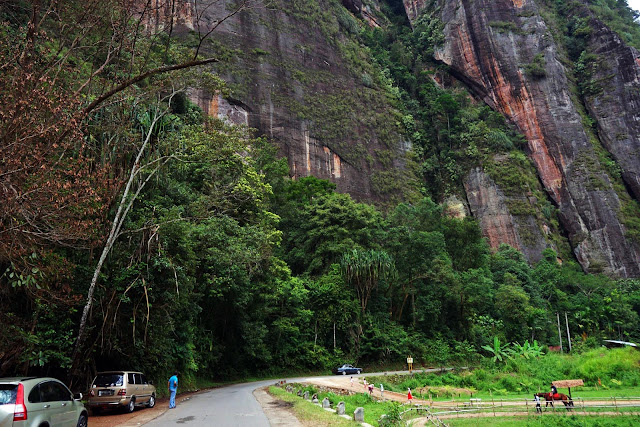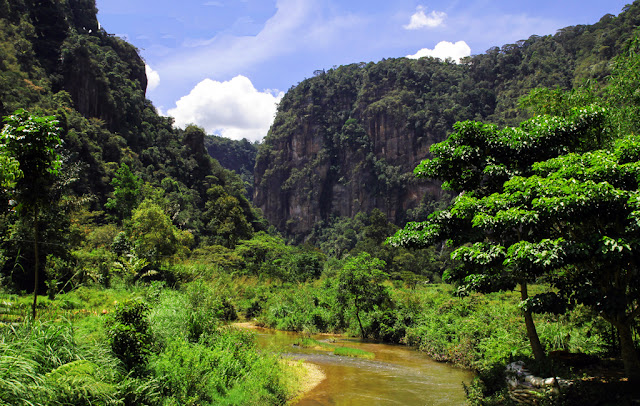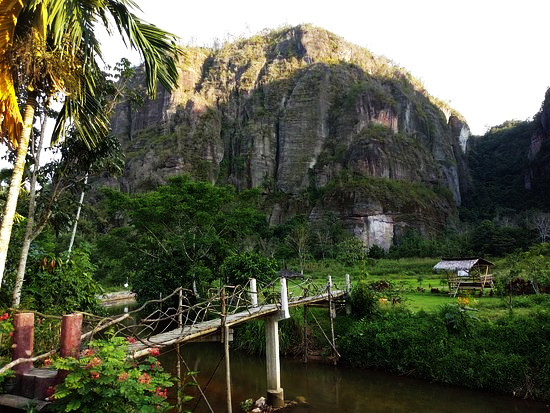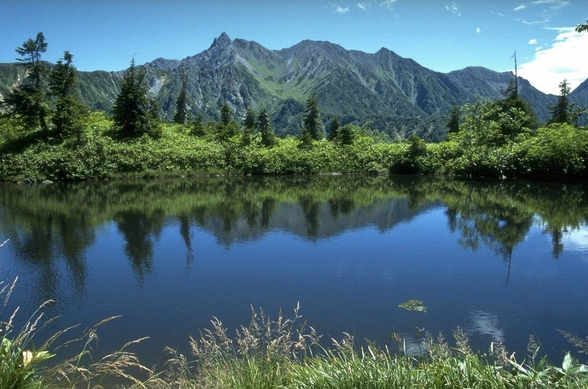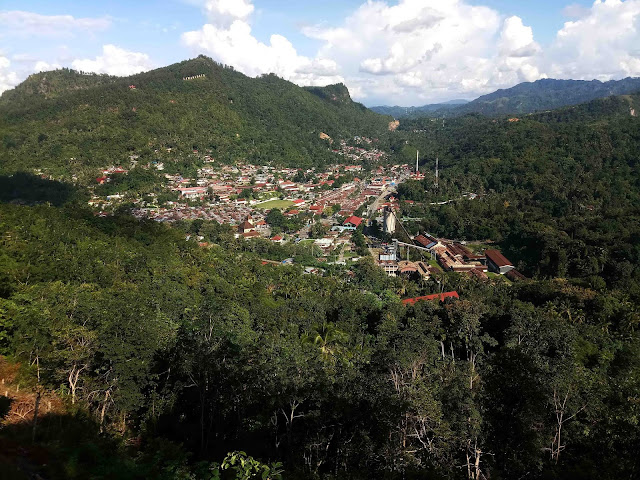Lake
Matano is a tectonic lake with a length of 28 kilometers and a width of 8
kilometers in South Sulawesi, precisely located in the eastern tip of South
Sulawesi province, bordering Central Sulawesi. This lake is about 50 km from
the town of Malili (the capital of East Luwu Regency)
This lake has a depth of 590 meters (1,969 feet). The lake's water surface is at an altitude of
382 meters above sea level so the depth of the lake's water from the sea
surface is 208 meters (cryptodepression). According to WWF, this lake is the
deepest lake in Southeast Asia and the eighth deepest in the world.
Lake Matano was formed from a strike-slip fault due to
tectonic activity that occurred during the Pleocene period. The age of the lake
is estimated to range from 1-4 million years ago. Based on sediment
characteristics analysis, Lake Matano is the oldest lake among the other four
lakes that form the system of Lake Malili (Towuti, Mahalona, Masapi, Lontoa).
Based
on the Decree of the Minister of Agriculture No. 274 / Kpts / Um / 4/1979 dated
April 24, 1979 the Lake Matano, Mahalona and Towuti area became a conservation
area for Nature Park under the name Lake Matano Nature Park, Lake Mahalona Nature
Park, and Lake Towuti Nature Tourism Park. With the status of a natural tourism
park, Lake Matano is a natural conservation area that is mainly used for
tourism and natural recreation. The uniqueness of lakes, ecosystems and
biodiversity that are very endemic makes Lake Matano included in the category
of Global Ecoregions by the World Wide Fund for Nature

Matano Lake has 6 species of clams (Tylomelania), 3 species
of crabs (Gecarcinucidae), 6 species of shrimp and 10 species of sharp fin fish
(Thelmaterinidae). One interesting species is the butini fish (Glossogobius
matanensis) which lives on the bottom of the lake. One interesting species is
the butini fish (Glossogobius matanensis) which lives on the bottom of the
lake. Opudi Fish (Telmatherina celebensis) is one of the ornamental fish th
at is traded both domestically and
overseas. The trade name of this fish is
Celebes Rainbow Fish or Celebes Sail Fish
Matano Lake is also used as a road to
cross between Sorowako and Nuha which connects Morowali District with East Luwu
Regency.
